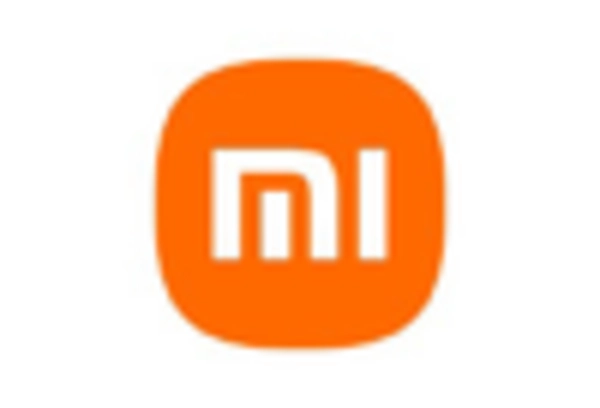Increased Health Awareness
The Fitness Tracker Market is experiencing growth driven by increased health awareness among consumers. As individuals become more conscious of their health and fitness, the demand for wearable technology that facilitates self-monitoring rises. Recent surveys indicate that nearly 70 percent of consumers are actively seeking ways to improve their health, which includes adopting fitness trackers. This heightened awareness is not only influencing purchasing decisions but also encouraging manufacturers to innovate and offer products that cater to health-conscious consumers. Consequently, the fitness tracker market is poised for expansion as more individuals recognize the importance of tracking their health metrics.
Growing Popularity of Fitness Apps
The Fitness Tracker Market is significantly influenced by the growing popularity of fitness applications. These apps often complement fitness trackers by providing users with personalized workout plans, nutrition tracking, and social sharing features. Recent statistics suggest that the fitness app market is projected to reach a valuation of over 14 billion dollars by 2026. This surge in app usage enhances the overall user experience, encouraging more individuals to adopt fitness trackers as part of their health regimen. The synergy between fitness trackers and mobile applications is likely to foster a more engaged user base, thereby propelling the growth of the fitness tracker market.
Integration of Advanced Health Metrics
The Fitness Tracker Market is witnessing a notable shift towards the integration of advanced health metrics. Consumers increasingly demand devices that not only track basic activities but also monitor vital health parameters such as heart rate variability, blood oxygen levels, and sleep quality. This trend is supported by data indicating that approximately 60 percent of fitness tracker users prioritize health monitoring features. As a result, manufacturers are investing in research and development to enhance the functionality of their products. This integration of sophisticated health metrics is likely to drive consumer interest and expand the market, as individuals seek comprehensive solutions for their health and wellness needs.
Technological Advancements in Wearable Devices
The Fitness Tracker Market is propelled by rapid technological advancements in wearable devices. Innovations such as improved battery life, enhanced sensors, and seamless connectivity with smartphones are making fitness trackers more appealing to consumers. Data shows that the market for wearable technology is expected to grow at a compound annual growth rate of over 15 percent in the coming years. These advancements not only enhance the functionality of fitness trackers but also improve user experience, making them more user-friendly and efficient. As technology continues to evolve, the fitness tracker market is likely to benefit from increased adoption rates among tech-savvy consumers.
Rising Demand for Personalized Fitness Solutions
The Fitness Tracker Market is significantly impacted by the rising demand for personalized fitness solutions. Consumers are increasingly seeking products that cater to their individual fitness goals and preferences. This trend is reflected in the growing popularity of customizable fitness trackers that allow users to tailor their experience based on personal metrics and objectives. Market Research Future indicates that personalized fitness solutions can enhance user engagement and satisfaction, leading to higher retention rates. As manufacturers respond to this demand by offering more adaptable and personalized features, the fitness tracker market is expected to expand, attracting a diverse range of consumers.














Leave a Comment